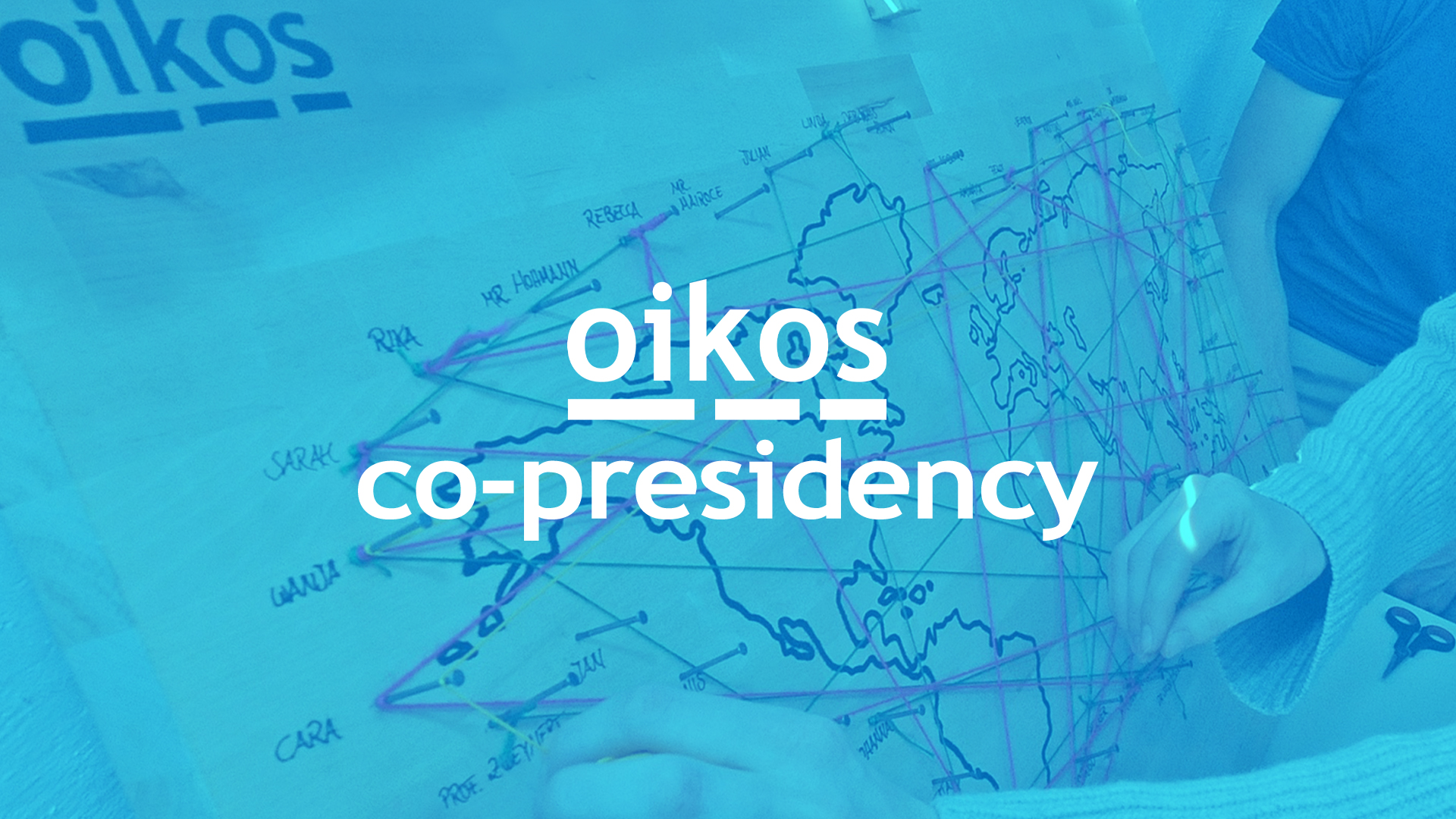
oikos was founded nearly 34 years ago as a Swiss association and over time there has been a lot of development & change work happening, both inside & outside of our student-led network. Only recently we embarked on taking several structural updates, which brought us a higher awareness of how certain hierarchical elements hinder us to live up to the democratic values we aspire for a sustainable world – values beyond representation and election.
At oikos International, we see our role in supporting the oikos community. With that in mind, we need supportive structures that enable us to nurture the diversity & thriving of the network. Our governance should be simple to understand, inclusive for all members and a role model for our chapters. At the same time, this is a moment to future-proof our organization in times of uncertainty and increased complexity: there is growing scientific evidence that leading alone is definitely not the way forward. How do we lead and learn together, what do collaboration and participation mean at oikos?
The role of the oikos president is to steward the oikos community and the international team while sharing the student experience of the community with external partners. Over the years, as the movement around sustainability gained in importance, the presidency has become a big responsibility with high workload & pressure. On the inside of oikos, decisions often have been handed over to the president, creating an unhealthy dependence and bottleneck between team, board and community. The question that popped up over the past years: Is our presidency-model still contemporary? How could we possibly move towards practicing the more participatory leadership we are preaching, and making sure that knowledge keeps evolving in the organization? How to address the roles of the president in a more spacious way, making more air for leadership, strategic guidance, operational support, partnerships and experience-sharing?
The conversation started during the governance updates that made us grow into a truly student-led organization in 2018. It has been picked up again at the end of 2020, with renewed energy and elevated information a year after the transition. After consulting the team and advisory council, we would like to open ourselves to the possibility of 2 presidents, working together as stewards of the team & community, as learning partners towards a more sustainable world.
Leading together: What does the new model look like?
We aim to have a co-presidency with a 2 years-mandate for each president. The presidential elections will happen on an anual basis in spring, where the community choses the president entering at the end of the year. This allows for a one year overlap between the two presidents’ terms, thereby increasing the continuity, while maintaining the dynamic and improving the efficiency of the handover from the outgoing to the newly elected presidents. We are also considering an internal name shift for the position of president as a way to express our relation to the community (e.g. towards ‘steward’), though we acknowledge that there might still be a need for a more conventional description for outside partners.
We aim to lower the working hours for both presidents to between 70-80% in the long term (from 100%), considering the unsustainability of a 42+ h work week. The arrangement, coordination & split of roles between presidents will be a mix of concise and clear, granular roles and adaptation to context and talent. In general, we will follow a rule of thumb: 1st year presidency: more community/inward focus, 2nd year of presidency: more outward/partners focus. Read more about the roles below.
|
How does the transition happen?
After enabling this movement with a constitution update at the beginning of the year, we will start the co-presidency with a pilot at the end of 2021, running the process as envisioned for the years to come except for an additional legislative meeting in Autumn.
There will be an extended report to the community at the end of 2022 by the two presidents, which will help us to sharpen the procedure and evaluate if this is a helpful approach for us.
More questions? Here some answers:
[toggle title=”What are the Roles of the 2 presidents and how to agree on that? “]
There are several granular roles to cover as a president, many of them currently can only be attended by stretching the working hours and running from meeting to meeting. Having clarity about these roles and potential additional roles (there might be new roles as we free up certain capacity, eg. community tending, fundraising) will allow a redistribution once the new president joins. The sharpening and agreement of roles will happen in an appreciative conversation, acknowledging that oikos is a complex organization and needs this space to shape the roles together in close collaboration.
Next to several granular roles that are owned by either one or the other, there will be several roles that will/should be shared by both, eg. to better regulate long-term partnerships or help the presidents to navigate the whole community. Partnerships in general should be maintained with a person over the 2-year term, and supported by a long-term employee. Beyond this, each role is enriched to address oikos’ purpose and the personal development needs of the individuals.
The concrete portfolio of roles will be presented at the legislative assembly, when the new president gets elected.
[/toggle]
[toggle title=”How do we aim to fundraise for the second president? “]
We will explore several paths at the same time, e.g.
- Adding budget to existing grants in the next period (eg. P4NE)
- Introducing an oikos Steward Scholarship: this Autumn, we will start a crowdsourcing with multiple stages, framing the presidency as a learning journey. He different barriers in the campaign will include salaries – co-working space – travel to chapters and other things
- For 2021, the available budget for the new community role will be partly allocated to a role of the president, easing the process
[/toggle]
[toggle title=”What is the legal situation?”]
Having 2 presidents is possible thanks to the neutral formulation in the new constitution. The new model will be added to the guideline and elaborated in a field guide. There are no further changes needed that have to be voted upon by the community, but we aspire to communicate as transparently and clearly as possible and value the perspectives of our members with highest priority.
[/toggle]
[toggle title=”What’s the timeline?”]
- Check for consent with oI team & advisory council (beginning June)
- Call for an additional Legislative Meeting, incl. call for application (mid-June)
- community-wide communication efforts, incl. onsite meetings in Summer
- Legislative Meeting & election of president before September (mid-August)
- Stepping in of co-president in Nov/Dec
[/toggle]
Excited about these developments? We are soon opening the application process for a new co-president and you will be able to apply and become a candidate in the upcoming election. Otherwise, if you wish support us to make this possible, you can do so by donating here.
Of course we are always happy to elaborate on further questions! Just write us an emailand we can find answers together.
This article is part of a series of articles on oikos Co-Presidency. It offers insights into our decision to shift to Co-Presidency. For further reading:
Open Call: oikos International Co-Presidency 2022-2023 – Do you wish to be a candidate? Find out how to apply.
Extraordinary oikos Legislative Meeting in August – The election process for the first ever oikos Co-President.



